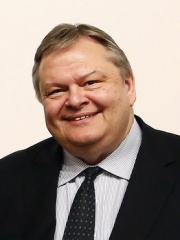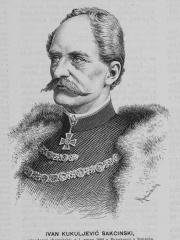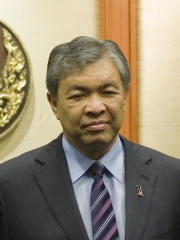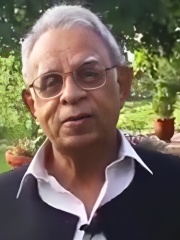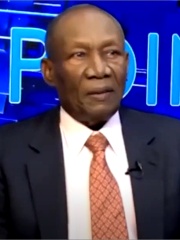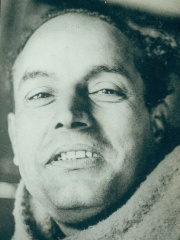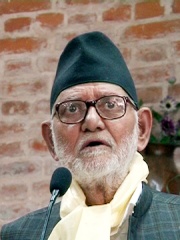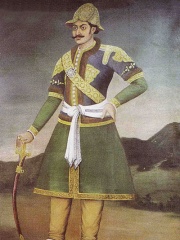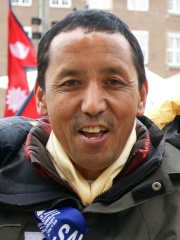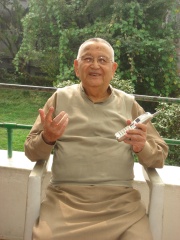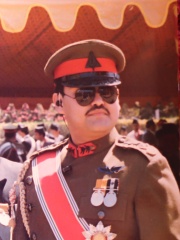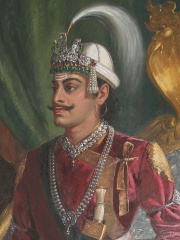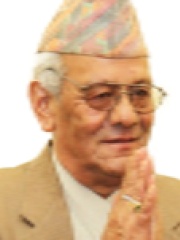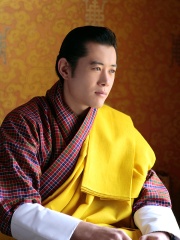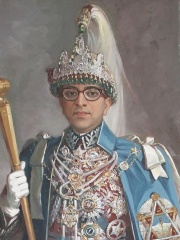POLITICIAN
Ashtavakra
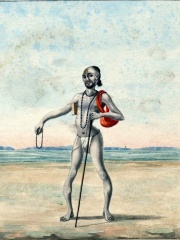
 Ashtavakra
Ashtavakra
Ashtavakra (Sanskrit: अष्टावक्रः, lit. 'eight deformities', IAST: Aṣṭāvakraḥ) is a revered Vedic sage in Hinduism. His maternal grandfather was the Vedic sage Aruni, his parents were both Vedic students at Aruni's school. Ashtavakra studied, became a sage and a celebrated character of the Hindu Itihasa epics and Puranas. Ashtavakra is the author of the text Aṣṭāvakra Gītā, also known as Aṣṭāvakra Saṃhitā, in Hindu traditions. Read more on Wikipedia
His biography is available in 20 different languages on Wikipedia (up from 18 in 2024). Ashtavakra is the 15,015th most popular politician (down from 13,289th in 2024), the 36th most popular biography from Nepal (down from 28th in 2019) and the 21st most popular Nepalese Politician.
Memorability Metrics
Page views of Ashtavakra by language
Among POLITICIANS
Among politicians, Ashtavakra ranks 15,015 out of 19,576. Before him are Evangelos Venizelos, Ivan Kukuljević Sakcinski, Domenico Flabanico, Eva Šuranová, Ahmad Zahid Hamidi, and Wasim Sajjad. After him are Prosper Avril, Eric Arturo Delvalle, Chuy García, Claudia Roth, Zac Goldsmith, and Gerhard Louis De Geer.
Most Popular Politicians in Wikipedia
Go to all RankingsEvangelos Venizelos
1957 - Present
HPI: 55.67
Rank: 15,016
Ivan Kukuljević Sakcinski
1816 - 1889
HPI: 55.67
Rank: 15,017
Domenico Flabanico
950 - 1041
HPI: 55.67
Rank: 15,018
Eva Šuranová
1946 - 2016
HPI: 55.67
Rank: 15,019
Ahmad Zahid Hamidi
1953 - Present
HPI: 55.67
Rank: 15,020
Wasim Sajjad
1941 - Present
HPI: 55.67
Rank: 15,021
Ashtavakra
HPI: 55.67
Rank: 15,022
Prosper Avril
1937 - Present
HPI: 55.66
Rank: 15,023
Eric Arturo Delvalle
1937 - 2015
HPI: 55.66
Rank: 15,024
Chuy García
1956 - Present
HPI: 55.66
Rank: 15,025
Claudia Roth
1955 - Present
HPI: 55.66
Rank: 15,026
Zac Goldsmith
1975 - Present
HPI: 55.66
Rank: 15,027
Gerhard Louis De Geer
1854 - 1935
HPI: 55.65
Rank: 15,028
In Nepal
Among people born in Nepal, Ashtavakra ranks 36 out of 59. Before him are Laxmi Prasad Devkota (1909), Araniko (1244), Sher Bahadur Deuba (1946), Sushil Koirala (1939), Bhimsen Thapa (1775), and Apa Sherpa (1960). After him are Surya Bahadur Thapa (1928), Jhala Nath Khanal (1950), Dipendra of Nepal (1971), Rana Bahadur Shah (1775), Pratap Singh Shah (1751), and Lokendra Bahadur Chand (1940).
Others born in Nepal
Go to all RankingsLaxmi Prasad Devkota
WRITER
1909 - 1959
HPI: 60.17
Rank: 30
Araniko
PAINTER
1244 - 1306
HPI: 59.85
Rank: 31
Sher Bahadur Deuba
POLITICIAN
1946 - Present
HPI: 58.32
Rank: 32
Sushil Koirala
POLITICIAN
1939 - 2016
HPI: 58.03
Rank: 33
Bhimsen Thapa
POLITICIAN
1775 - 1839
HPI: 57.55
Rank: 34
Apa Sherpa
MOUNTAINEER
1960 - Present
HPI: 56.20
Rank: 35
Ashtavakra
POLITICIAN
HPI: 55.67
Rank: 36
Surya Bahadur Thapa
POLITICIAN
1928 - 2015
HPI: 54.66
Rank: 37
Jhala Nath Khanal
POLITICIAN
1950 - Present
HPI: 54.52
Rank: 38
Dipendra of Nepal
POLITICIAN
1971 - 2001
HPI: 54.02
Rank: 39
Rana Bahadur Shah
POLITICIAN
1775 - 1806
HPI: 53.97
Rank: 40
Pratap Singh Shah
NOBLEMAN
1751 - 1777
HPI: 52.40
Rank: 41
Lokendra Bahadur Chand
POLITICIAN
1940 - Present
HPI: 52.32
Rank: 42
Among POLITICIANS In Nepal
Among politicians born in Nepal, Ashtavakra ranks 21. Before him are Jigme Khesar Namgyel Wangchuck (1980), Tribhuvan of Nepal (1906), Mahendra of Nepal (1920), Sher Bahadur Deuba (1946), Sushil Koirala (1939), and Bhimsen Thapa (1775). After him are Surya Bahadur Thapa (1928), Jhala Nath Khanal (1950), Dipendra of Nepal (1971), Rana Bahadur Shah (1775), Lokendra Bahadur Chand (1940), and Man Mohan Adhikari (1920).
Jigme Khesar Namgyel Wangchuck
1980 - Present
HPI: 62.77
Rank: 15
Tribhuvan of Nepal
1906 - 1955
HPI: 60.76
Rank: 16
Mahendra of Nepal
1920 - 1972
HPI: 60.38
Rank: 17
Sher Bahadur Deuba
1946 - Present
HPI: 58.32
Rank: 18
Sushil Koirala
1939 - 2016
HPI: 58.03
Rank: 19
Bhimsen Thapa
1775 - 1839
HPI: 57.55
Rank: 20
Ashtavakra
HPI: 55.67
Rank: 21
Surya Bahadur Thapa
1928 - 2015
HPI: 54.66
Rank: 22
Jhala Nath Khanal
1950 - Present
HPI: 54.52
Rank: 23
Dipendra of Nepal
1971 - 2001
HPI: 54.02
Rank: 24
Rana Bahadur Shah
1775 - 1806
HPI: 53.97
Rank: 25
Lokendra Bahadur Chand
1940 - Present
HPI: 52.32
Rank: 26
Man Mohan Adhikari
1920 - 1999
HPI: 52.27
Rank: 27
